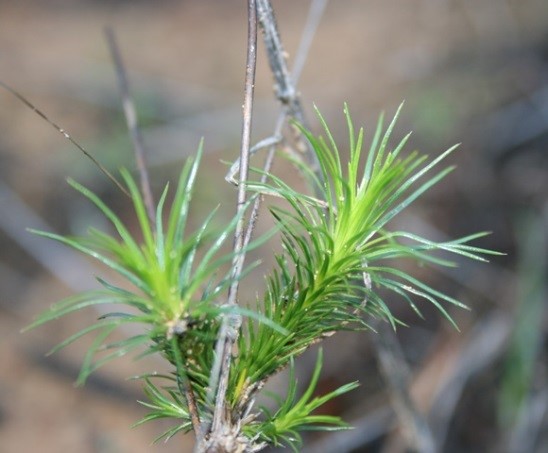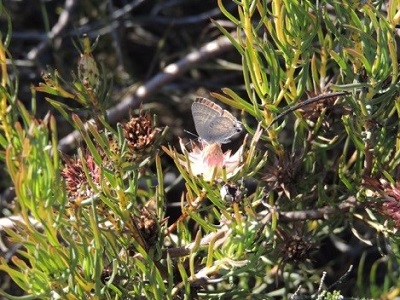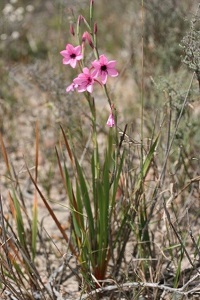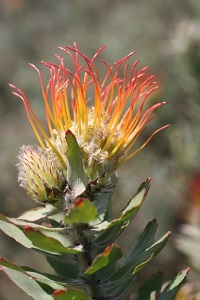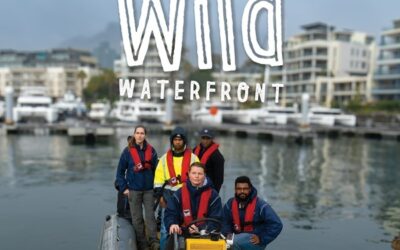Cape Town has blooming surprises growing on its doorstep! The recent discovery of various rare and endangered fynbos plants blooming across the city is testament to Cape Town’s wealth of biodiversity.
Some of the species include the endangered Erepsia hallii near Atlantis; Gladiolus griseus, one of the rarest of its kind; and a new population of endangered Adenogramma rigida.
These findings are the result of a partnership between the City’s Environmental Resource Management Department, the Tygerberg Custodians of Rare and Endangered Wildflowers group (CREW), and CapeNature. They are taking concerted steps to preserve and protect recently discovered rare and endangered fynbos species in Cape Town.
Cape Town, located in the Fynbos Biome, is well known for its biodiversity and has over 3 000 plant species – 318 of which are on the Red Data Threatened List.
These discoveries have come at a pertinent time, with South Africa facing a crisis of fynbos being lost to invasive plant species and urban sprawl, particularly in the lowlands. The City welcomes these findings, which demonstrate the wealth of biodiversity that remains resilient and adaptive on the flats.
The Tygerberg CREW group regularly visits and monitors more than 40 sites and hundreds of threatened species throughout Cape Town and its immediate surrounds. Based on the field work conducted by CREW, the City’s Environmental Resource Management Department and CapeNature are enabled to streamline the Conservation Stewardship Programme and to focus and allocate the limited conservation resources.
The endangered Erepsia hallii, a tiny succulent with small yellow flowers that was previously only located in Darling, was found at the Kanonkop Nature Reserve in Atlantis. More populations have since been found along the crest of Dassenberg Hill – the primary landscape feature of the larger Dassenberg Coastal Catchment Partnership (DCCP) area that aims to conserve an extensive area of endangered and critically endangered lowland vegetation in the Atlantis, Mamre and the Darling area. This area forms one of the two most important climate change adaptation corridors in the Western Cape with respect to biodiversity management.
Another surprise discovery in the DCCP was the critically endangered Psoralea glaucina, previously known from a handful of tiny populations around Muizenberg. The little pale blue flowers, found on the edges of the sand fynbos wetlands around the Atlantis dunes, can easily be overlooked by the untrained eye.
A new population of endangered Adenogramma rigida was found and a new record was discovered on the sandy slopes of the Dassenberg Hill. It was thought to have become extinct, until 2009 when it was rediscovered near Houwhoek. It is still estimated that fewer than 500 plants remain in existence. The DCCP population will soon be incorporated into a formally proclaimed nature reserve.
The beautiful and fragrant Gladiolus griseus is one of the rarest Gladiolus species around. Historically, they occurred on the Cape West Coast from Saldanha, south towards Milnerton, but after 100 years of coastal developments the species has since been restricted to three small populations, with fewer than 250 individual plants left in the wild. Another small population was found on the coastal dunes around Silverstroomstrand.
The endangered Othonna linearifolia, which was described in 1894 and listed as extinct, was discovered around the Dassenberg Hills in 2010 by the Tygerberg CREW group. Three more populations were found in the vicinity. The City’s conservation staff are working with the land owners to try and conserve its habitat as these are not currently in protected areas.
Over the past few months, the City’s Conservation Services Unit has been working with the farmers around Klipheuwel to try and establish private conservation areas for the region. The clay soil of the Swartland is perfectly suited for crop cultivation, particularly grains, but was also home to vast stretches of renosterveld. Currently, less than 5% of the renosterveld in the Swartland remains, with less than 1% under conservation management.
The pockets of renosterveld on the lowlands are typically less than 10 ha in size, with only three or four larger pockets remaining in the city. These larger pockets are key in preserving the last populations of several species on the brink of global extinction, including the geometric tortoise. Some of these super-rare species include:
• Watsonia strictiflora: one population stretching across two properties, less than 500 plants remain
• Protea odorata: one population, less than 10 plants remain
• Marasmodes dummeri: six populations with less than 1 000 plants combined (also new for the city)
• Leucospermum grandiflorum: the last lowlands population (15 plants), but with a separate gene type occurring on the Boland mountains that is well conserved.
‘The City welcomes the discovery of these new species within in our environment. Such good news comes at a time when our country is facing a crisis of fast diminishing fynbos, particularly in the lowlands. This proves that a wealth of biodiversity remains untapped, with much more left to discover. As a City and as society, there is much to learn from the resilience of our ecosystems as their natural functions adapt to combat the threats imposed upon them. It is up to the City, our partners, and the public to work together to find these hidden blooms, and make every effort to conserve and protect them from eradication,’ said the City’s Mayoral Committee Member for Energy, Environmental and Spatial Planning, Councillor Johan van der Merwe.
South Africa is the third most biodiverse country in the world, primarily because of the amazing species richness of the Fynbos Biome.
Time to enjoy the great green outdoors.

